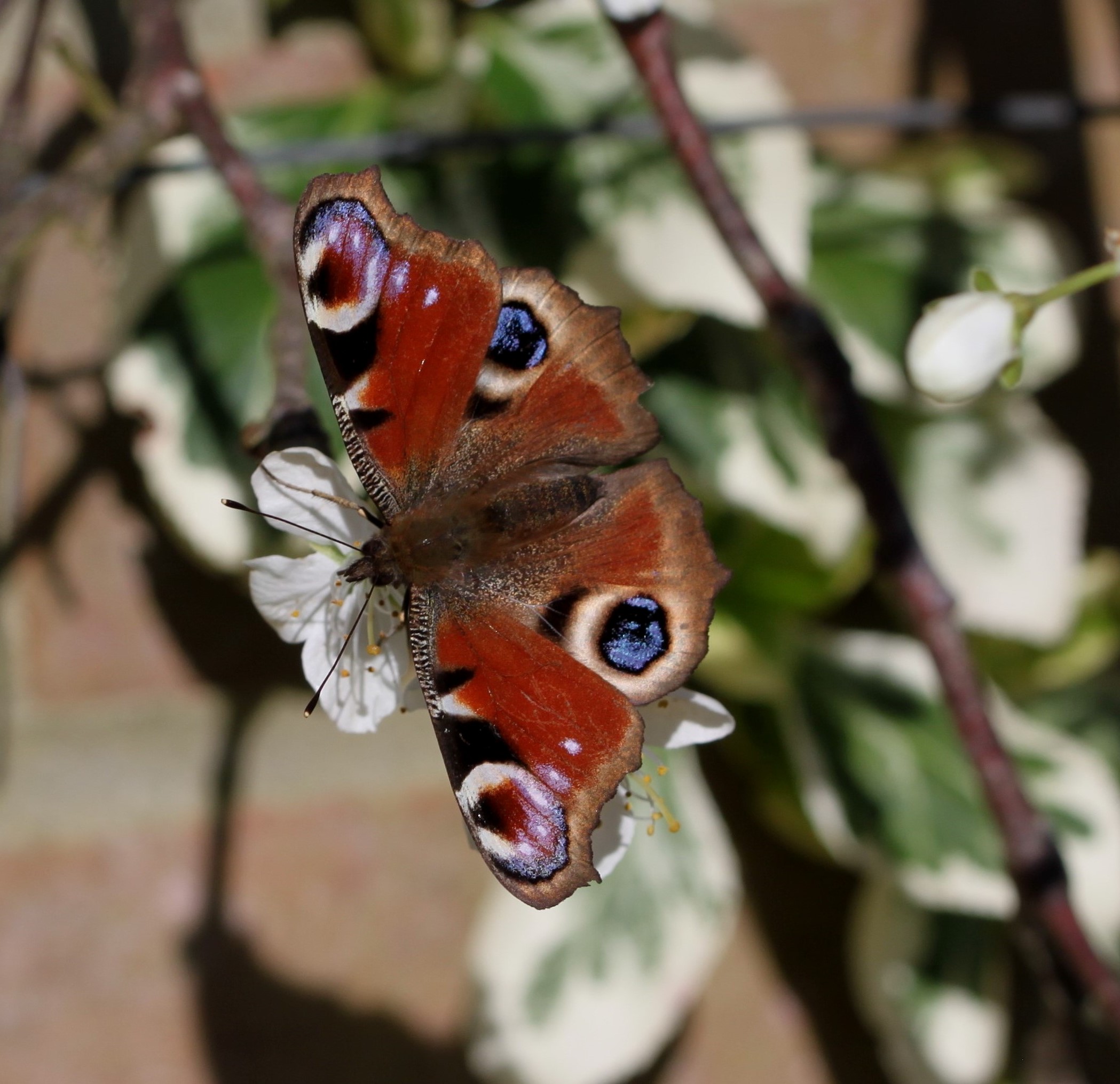
Aglais io
With four huge eyes it is one of our best-known and easily recognised butterfly species. This is a long-lived, single-brooded species with some adults surviving 11 months. Although the “first-sighting” in Sussex is often in January, the main emergence from hibernation usually takes place sometime in April. In the early spring, nectar is in relatively short supply, but the catkins of Goat Willow are a great provider. Male Peacocks feed in the mornings and then set up territories on the sunny edge of a wood or hedgerow, often using paths or tracks. In a densely populated area, you may find one every 10-15 metres, or so.
Second generation fresh adults appear in late July, onwards, and large numbers may invade our gardens, where they find Buddleia irresistible. In the wider countryside look for them on a variety of wildflowers including Hemp Agrimony, Field Scabious, and various thistles. They need to gorge on nectar and store sufficient energy to survive the following six months of hibernation.
Widespread and generally abundant, they can be found in any sunny, woodland ride, but the easiest location to observe and photograph Peacocks, is in your garden.

Peacock nectaring on Plum blossom – photo by Martin Kalaher
.JPG)
Nectaring on Field Scabious
.JPG)
Nectaring on Hemp Agrimony
.JPG)
Nectaring on Michaelmas Daisy
.JPG)
Nectaring on Michaelmas Daisy
.JPG)
Peacock caterpillars munching on Hop leaves
Butterfly Conservation Peacock